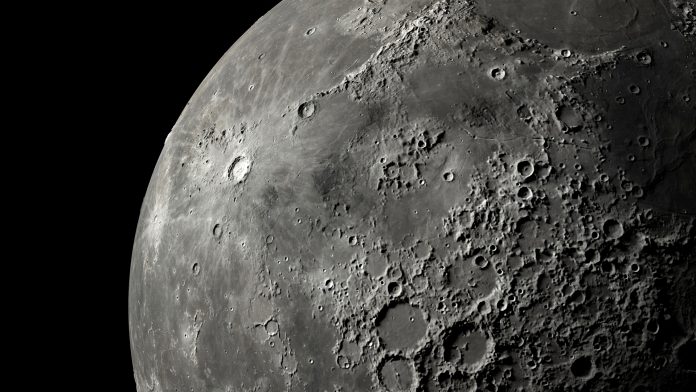Researchers led by the Smithsonian Astrophysical Observatory, USA, have published a paper on the issues associated with the growing interest in extracting the Moon’s resources.
The international team of researchers suggest that there are not enough of the Moon’s resources to meet the demands of those seeking to extract them. With no international policies or agreements to decide who gets what from where, scientists believe tensions, overcrowding, and quick exhaustion of resources to be one possible future for Moon mining projects.
Martin Elvis, astronomer at the Smithsonian Astrophysical Observatory and the lead author on the team’s paper published in Philosophical Transactions of the Royal Society A, said: “A lot of people think of space as a place of peace and harmony between nations. The problem is there’s no law to regulate who gets to use the resources, and there are a significant number of space agencies and others in the private sector that aim to land on the moon within the next five years. We looked at all the maps of the Moon we could find and found that not very many places had resources of interest, and those that did were very small. That creates a lot of room for conflict over certain resources.”
Resources like water and iron are important because they will enable future research to be conducted on, and launched from, the Moon. Elvis said: “You don’t want to bring resources for mission support from Earth, you’d much rather get them from the Moon. Iron is important if you want to build anything on the moon; it would be absurdly expensive to transport iron to the Moon. You need water to survive; you need it to grow food – you don’t bring your salad with you from Earth – and to split into oxygen to breathe and hydrogen for fuel.”
An extensive body of research dating back to the Apollo programme, which occurred between 1969 to 1972, has explored the availability of resources such as helium, water, and iron, with more recent research focusing on continuous access to solar power, cold traps and frozen water deposits. Tony Milligan, a Senior Researcher with the Cosmological Visionaries project at King’s College London, and a co-author on the paper said: “Since lunar rock samples returned by the Apollo programme indicated the presence of Helium-3, the Moon has been one of several strategic resources which have been targeted.”
Although some treaties do exist, like the 1967 Outer Space Treaty, prohibiting national appropriation, and the 2020 Artemis Accords, reaffirming the duty to coordinate and notify, neither is meant for robust protection. Much of the discussion surrounding the Moon, and including current and potential policy for governing missions to the satellite, have centred on scientific versus commercial activity, and who should be allowed to tap into the resources locked away in, and on, the Moon.
Alanna Krolikowski, assistant professor of science and technology policy at Missouri University of Science and Technology (Missouri S&T) and a co-author on the paper, said: “The biggest problem is that everyone is targeting the same sites and resources: states, private companies, everyone. But they are limited sites and resources. We don’t have a second moon to move on to. This is all we have to work with.”







